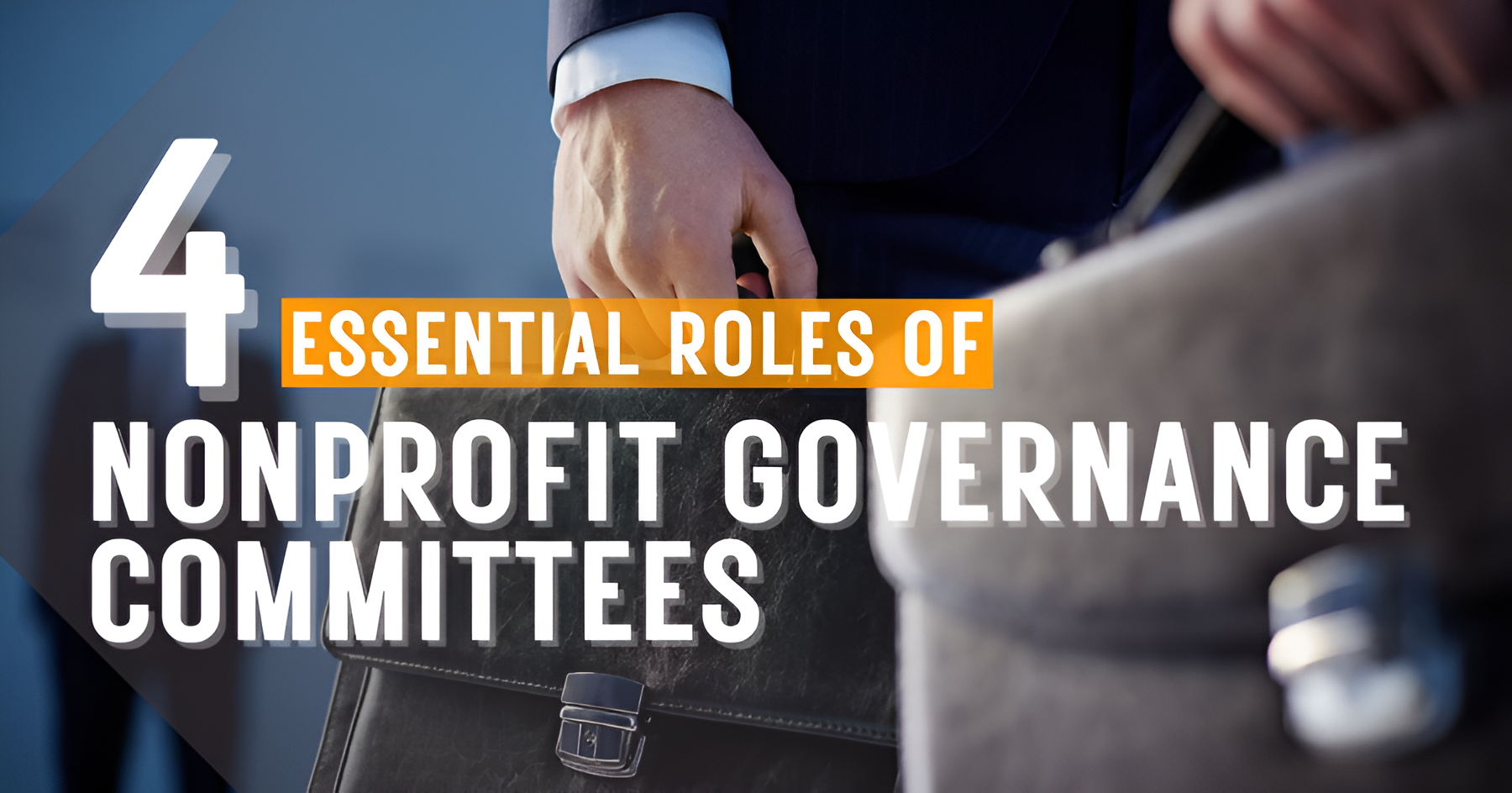
Nonprofit Governance Committees are a vital entity for many organizations as they focus their efforts on establishing policies and monitoring their success. For this reason, this article will cover the role that nonprofit governance committees play and their best practices.
Table of contents
4 Essential Governance Committee Roles and Responsibilities
The governance committee is mainly responsible for 4 key things: board nominations, elections, board evaluations and training.
Here are the 4 Essential Roles of the Governance Committee:
1. Board Nominations
One of the most important roles of a Nonprofit Governance Committee is filing vacancies on the board.
When it comes to building a not-for-profit board, it’s essential to be mindful of recruiting the correct balance of independence, business specialization, technical skills, diversity and geographic representation (when relevant).
Today’s Governance Committees not only needs to consider diversity in the skills of board members but also diversity in the characteristics that define an individual. This could involve a diversity of age, gender, ethnicity, religion, sexual orientation, people with disabilities, and education.
However, keep in mind that diversity isn’t just data. It’s a conscious effort to empower, respect, and appreciate what makes your board members different from one another and the benefits that brings to your organization.
Governance Committee: This committee is responsible for nominating board candidates, ensuring that the size, leadership, and composition of the board (and committees, as applicable) are appropriate, and overseeing governance structures and policies.
Guide To NonProfit Governance 2019
Stay Up-To-Date With Current Legislation- Different is Stronger: Diversity Boards In Canada
2. Managing the Election Process
When it comes to annual general meetings and recruiting new board members, this falls under the responsibility of the Governance Committee.
The Governance Committee is responsible for ensuring all of the available seats get filled by the right people, following the guidelines set out in the organization’s manual and bylaws.
3. Conduct Annual Board Evaluations
Annual Board Evaluations are critical. Don’t think of them as a criticism; instead, they’re a vital guide to let individuals and the organization know what they’re aiming for and if the goals of the role were met.
Board evaluations help highlight gaps in crucial skills and duties needed to fulfill a board member’s role. Whereas, Individual Board Member Performance Evaluations are equally critical in addressing engagement, skill gaps and clarifying their role and responsibilities.
Download our free Board Evaluation form to help you evaluate the effectiveness of your board.
4. Training Board Members
The typical nonprofit board changes its members every 1 to 2 years. However, with the continual rotation of board members, the governance committee is responsible for making sure new board members get the training they need to fulfill their roles effectively.
Therefore, this training might include how to run effective meetings, the role of the chair at meetings, identifying conflict of interest and general governance best practices.
Final Thoughts: Nonprofit Governance Committee Best Practices
Our roles and responsibilities of the Governance Committee are based on our governance model: The Complementary Model Of Board Governance. By following this model you’ll ensure that specific goals, achievements, and responsibilities are met by implementing good governance policies and structures.
Also read:
- The Role Of The Board Chair At Meetings
- Why Mission Statements For Nonprofits Matter Most
- Virtual Governance Training Set Up
